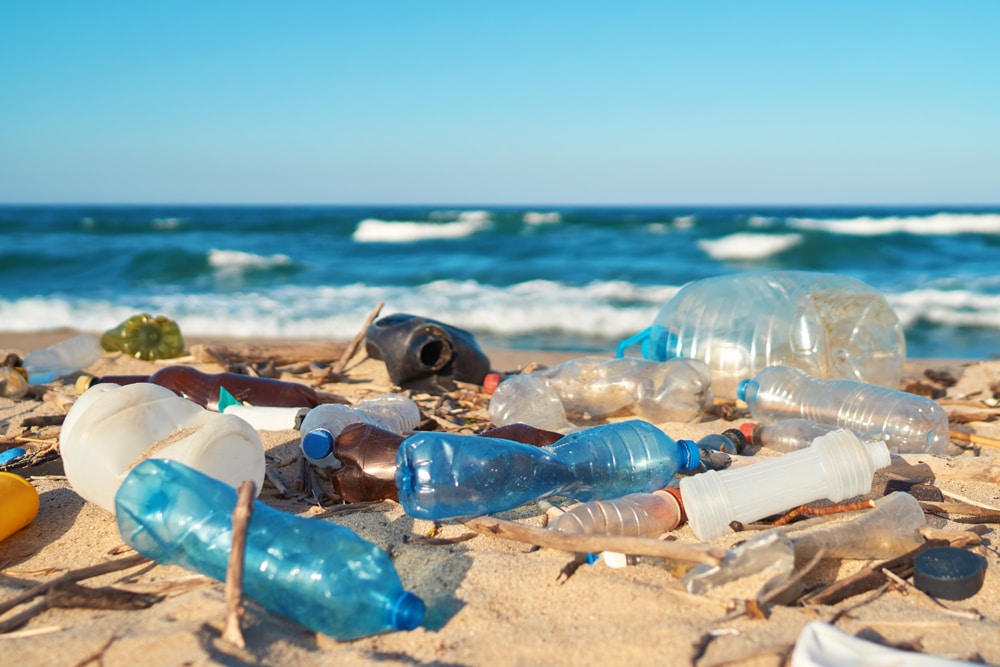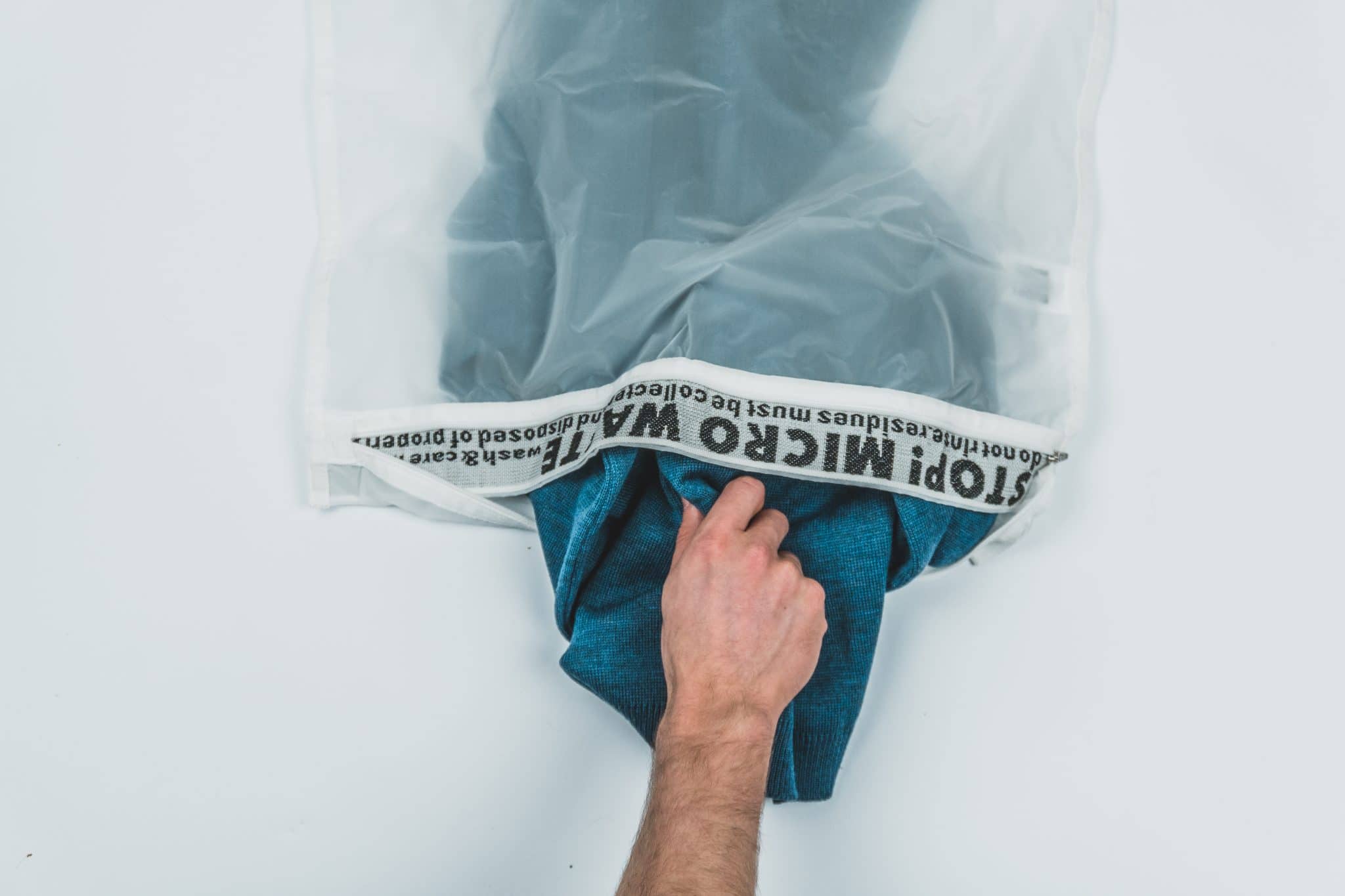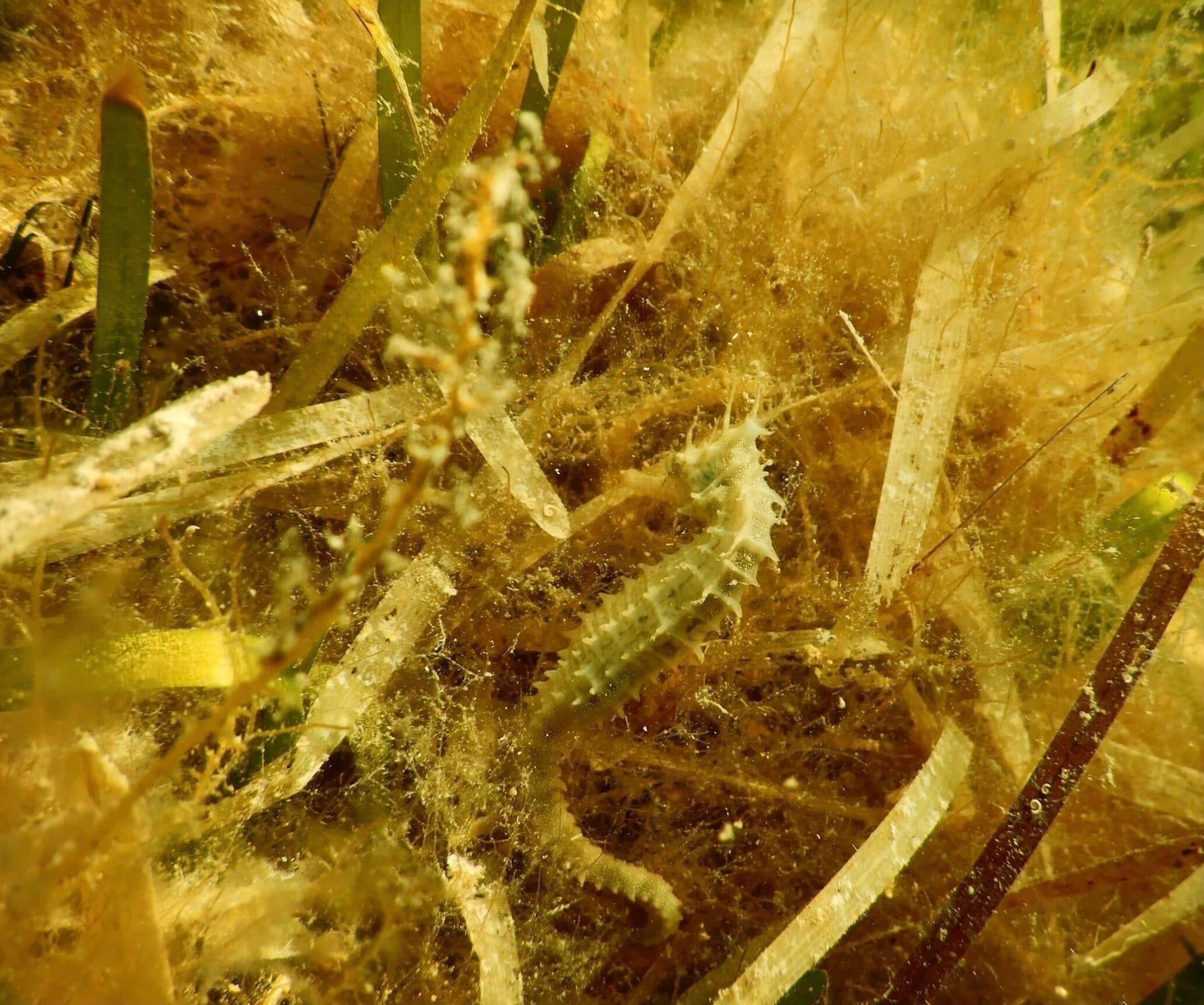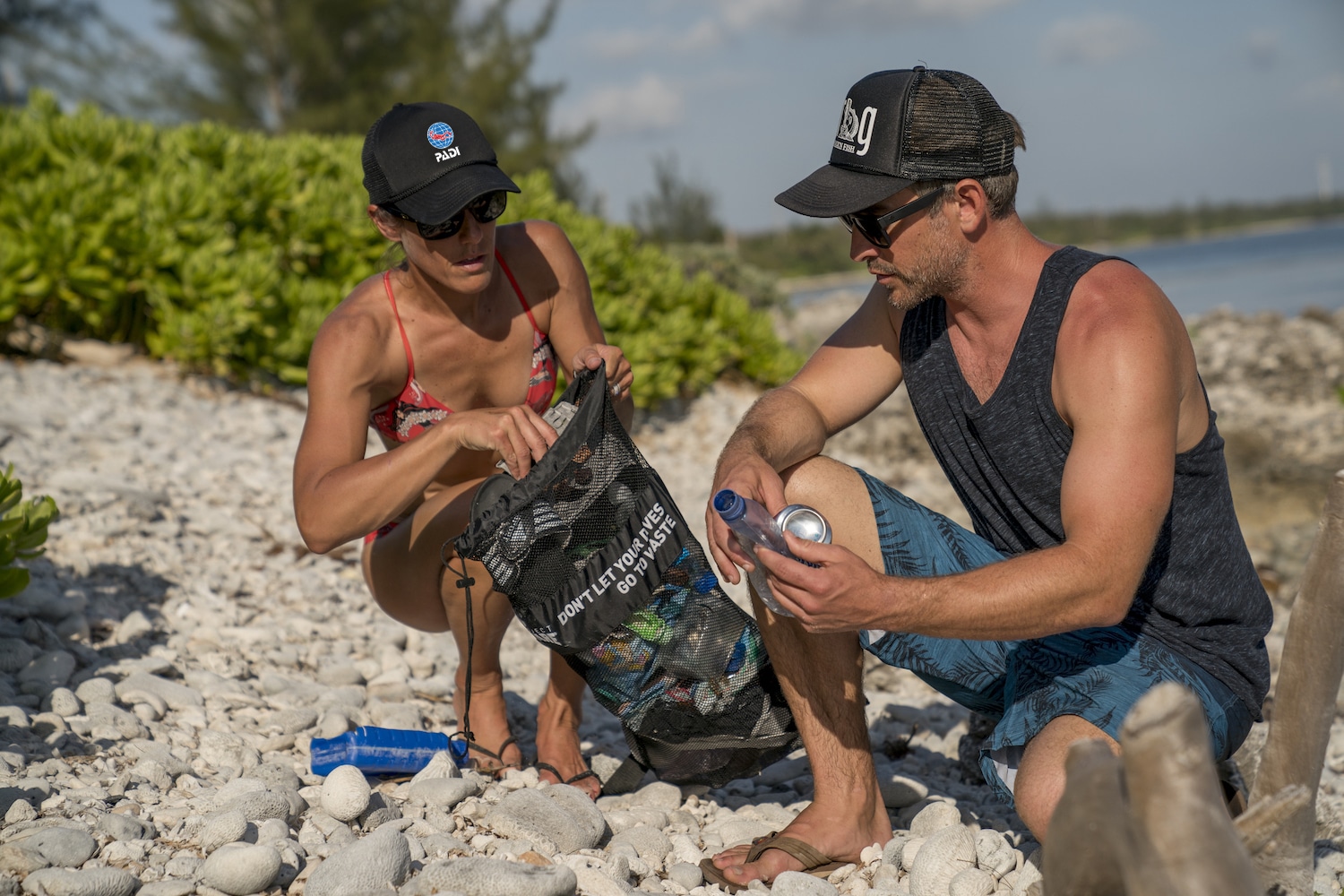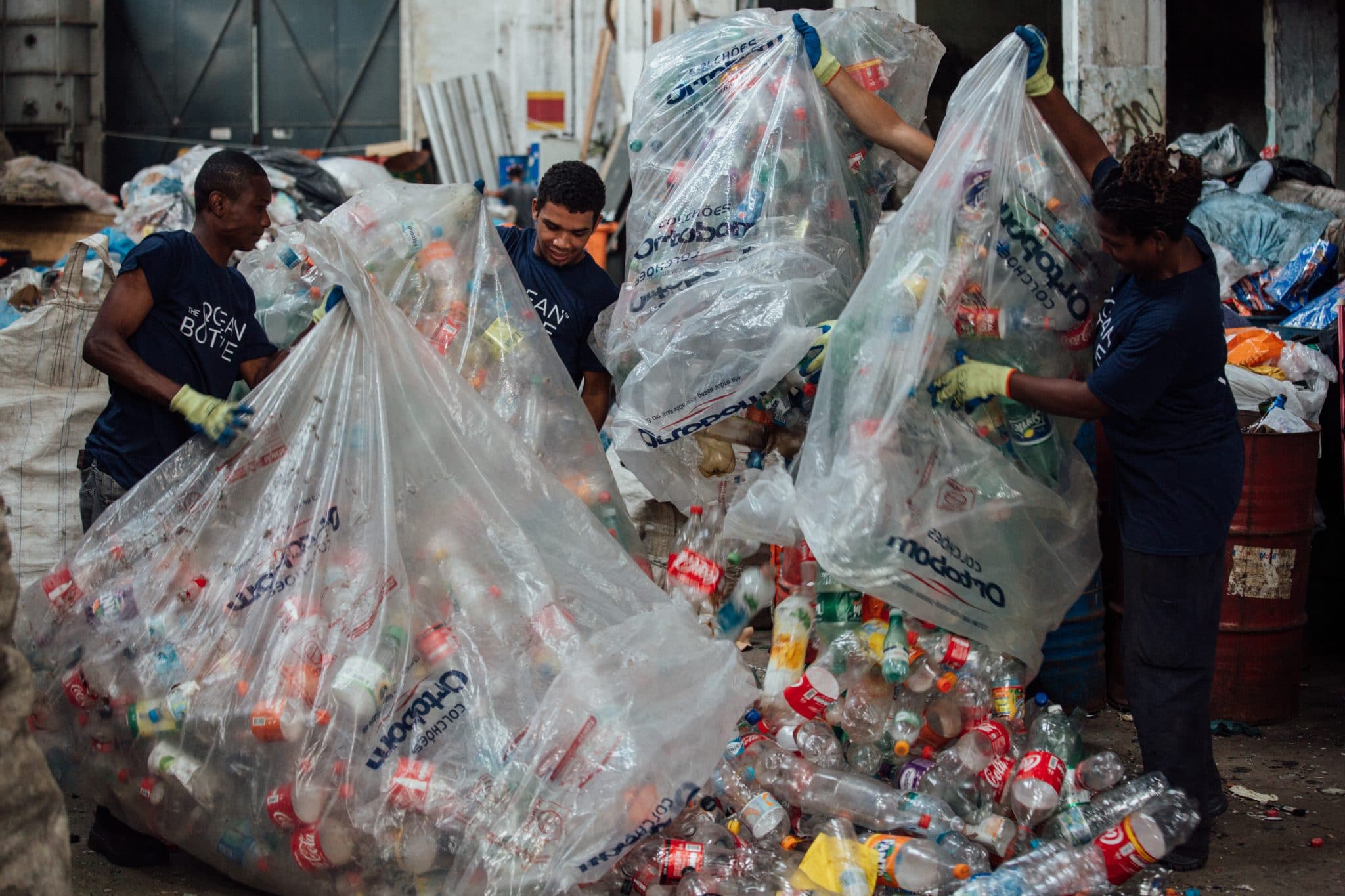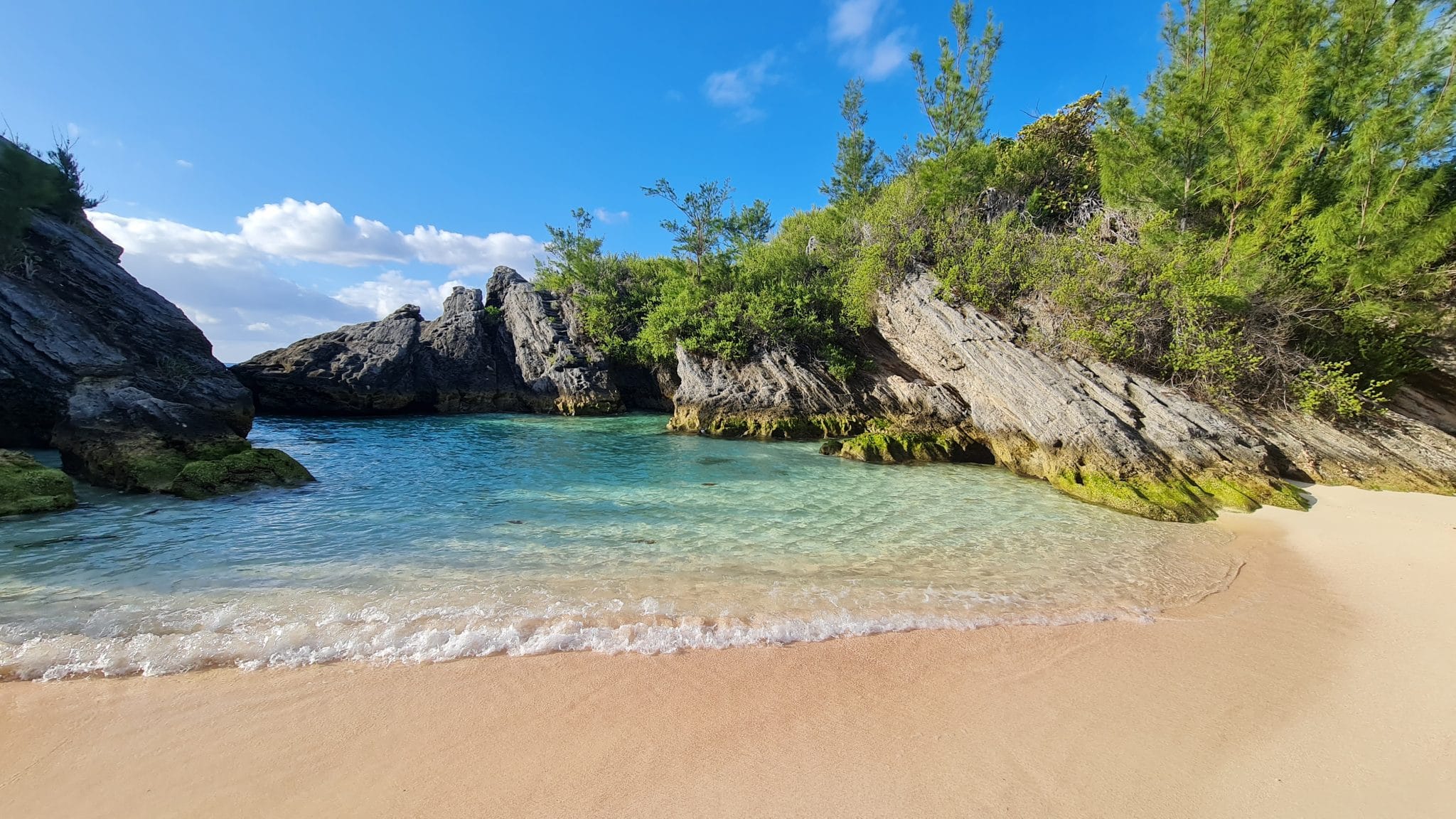Marine Life & Conservation Blogs
Diving in to protect out wonderful watery world
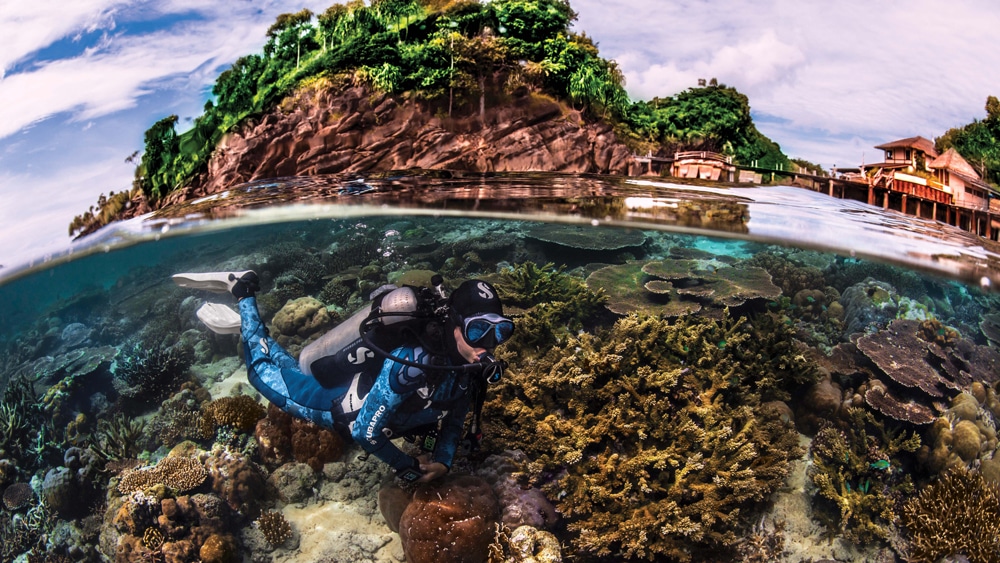
Water is one of the critical elements on our planet that gives us life. And although we all know this, the data is shocking when it comes to just how much we’ve collectively put this vital element at risk, threatening our planet’s – and our very own – existence.
In recent years we’ve grown more aware of the invisible plastic problem, with particles found in locations as remote as the Arctic and Antarctic Oceans. Plastic is in our water, soil and the air we breathe. But it’s in the ocean that they find their way into our food systems. It is now estimated for every pound of phyto-plankton, there are 6 pounds of plastic in the ocean.
Our global issue has become urgent. Last week, during the United Nations Environment Assembly, representatives from 175 nations passed a resolution for a globally binding treaty against plastic pollution, including recycling and cleanup measures, as well as curbs on plastic production. Many have agree this is the most important environmental accord since the 2015 Paris Agreement on climate change – and the first of its kind.
PADI’s 7 Ways To Help Improve Water Quality
As we recognise World Water Day, we invite you to think about the value of water. How is clean water important to your family, your livelihood, your culture, your wellbeing, and your environment? How important is it to you to keep that water plastic free?
A few small changes in your behavior can make a very big difference!
1. CHANGE YOUR BUYING DECISIONS + FORGET DISPOSABLE FASHION
Every buying decision you make has the power to change the world a little, and you should be aware of this. It’s how you start wielding that power for good. Right now, it’s estimated that fibers are, by count, the single largest contributor to watershed plastic pollution in developed countries. Synthetic fibers produce microplastics when washed. Since over 60% of fabric produced by the textiles industry in 2020 was polyester, that translates into 1.7 million tons of microfibers are released into the ocean every year!
Did you know that one fleece jacket could shed up to 250,000 pieces per garment per wash. New York City, alone, could has 6.8 billion microfibers flowing into its harbor every day. The problem is so severe the State of California just dedicated $3 million dollars to addressing it.
TOP TIP: Reconsider your fashion decisions and buy sustainable, organic materials. Check out these great long-term options from PADI Gear.
2. KEEP MICROPLASTICS OUT OF YOUR LOCAL WATERWAYS ON LAUNDRY DAY
Microplastics (teeny tiny pieces of plastic) have become a huge global issue polluting freshwater and saltwater waterways around the world. Scientists have found that washing clothes is one of the primary sources of microplastics that end up in the ocean. With every wash, plastic fibers shed from synthetic fabrics are making their way from washing machines into the water.
One way to keep plastic microfibers out of your local waterways is to incorporate clothing made from natural, non-synthetic materials into your wardrobe as much as possible. But for those items you already have, you can institute a simple change to washing to ensure that you can achieve up to 86% fewer fibers shed from synthetic textiles.
TOP TIP: For whatever clothes, bedding, and towels you have that are made from synthetic materials – Check out Cora Ball and Guppyfriend.
3. EVERY BLADE OF SEA GRASS COUNTS!
As seawater flows through seagrass meadows, sediment and particles suspended in the water column become trapped too. This means cleaner, filtered oceans – the natural way. Without seagrass, sediments are more frequently stirred up which decreases visibility, and there is nothing to stop land-based industrial discharge or storm water runoff from washing right onto delicate ecosystems.
Seagrasses occupy 0.1% of the seafloor, yet are responsible for 11% of the organic carbon buried in the ocean, helping mitigate the effects of ocean acidification on our coral reefs. Blue carbon ecosystems keep our coral reefs healthy in another important way too; by providing the foundations of life in our oceans.
Scientists estimate that at the current rate, we lose a seagrass meadow the size of a soccer field every 20 minutes. If more action is not taken immediately to restore these vital habitats, most may be lost within 20 years.
TOP TIP: PADI has partnered with The Ocean Foundation to support The SeaGrass Grow Program, empowering you to mitigate the carbon from your next holiday. You can donate to the program every time you book a trip with PADI Travel, or simply make a donation seagrass to be planted in honor of World Water Day.
4. CLEAN UP YOUR ACT!
Of the 8.3 billion metric tons of plastic we’ve collectively manufactured date, it is estimated only nine percent has ever been recycled. Approximately 11 million metric tons of this plastic end up in the ocean every year, with this number expected to triple by 2040.
According to National Geographic, 73% of all beach litter is plastic. Whatsmore, 90% of plastic polluting our oceans is carried by just 10 rivers.
One of the easiest ways to help waterways in your local area is to dispose properly of trash and also pick up any trash you find. With most land-based debris eventually making its way to the water, simply picking up litter anywhere in your neighborhood will make a difference. It doesn’t matter how near or far you may be from a lake, river, or beach.
PADI has partnered with The Ocean Cleanup to tackle our global ocean plastic pollution. Together, the organisations are mobilizing divers at a local level to take action for global impact. This partnership pairs The Ocean Cleanup’s advanced technologies with the passion of the global dive community to inform ocean-friendly waste management policies in countries worldwide through data collection.
TOP TIP: You can join in on the efforts of PADI and The Ocean Cleanup too. Whether you choose to organize a formal clean up or simply pick up what you find, you’ll know that you’re making a direct positive impact on the health of the environment around you.
5. REDUCE SINGLE USE PLASTIC
These past few years of pandemic have been especially hard on all of us – including the plastic. What was considered taboo and even banned in some places was reintroduced and re-accepted as the norm to ensure we were staying germ free. Plastic bags, take out containers, plastic straws and utensils and plastic wrap all found their way back into many of our lives and homes.
We’ve learned a lot – and it’s time to regroup. Be conscious of limiting the amount of single-use plastic wherever possible. The next time you order out, be conscious of not taking plastic straws, cups or utensils with you for that takeaway meal and use your own at home. Stop using plastic bags, plastic wrap and single use items – there’s plenty of other options from biodegradable materials to silicone to beeswax wraps. It’s time to give our waterways a break.
TOP TIP: PADI loves the idea of replacing plastic with single use items that offer a lot more benefits than reusability!
6. LEARN TO DIVE (OR MERMAID!) + BECOME AN UNDERWATER TRASH COLLECTOR
Did you know that the majority of divers have also appointed themselves as ocean trash collectors? PADI Divers have the unique ability to physically remove and report marine debris beneath the surface. The PADI AWARE Foundation launched Dive Against Debris over a decade ago and since then more than 30,000 divers in over 50 countries have taken part in removing plastic from our oceans. PADI comm track to remove 2 million pieces of trash by next month!
Don’t have a desire to dive? No problem. PADI also offers mermaid courses. Our PADI Mermaid Team also hosts “Tails that Thrash Trash” events to put those magical moments to good use.
If you are already a diver or mermaid, you can take a PADI Specialty courses authored by PADI AWARE help divers lead action on marine debris prevention. For more than 25 years PADI AWARE has been uniting water enthusiasts across the globe. Earning a PADI AWARE Dive Against Debris specialty, you’ll learn more valuable and easy ways to take meaningful action to help safeguard waterways you love.
TOP TIP: There is no better reason to become a PADI Open Water Diver than the fact that once you are certified you can have a literal hands-on role in saving the ocean and helping eliminate a side of plastic from our food menu once and for all.
7. GIVE PLASTIC A NEW LIFE
Making small changes on an individual level can collectively result in big change for our blue planet. Where possible, choose recycled plastic products. From sunglasses to outdoor furniture and dog collars to running shoes, there are so many options when it comes to purchasing items made of recycled plastic.
To make finding these products easier than ever, PADI has created an ocean-first marketplace that amplifies your ability to make a positive impact. PADI Gear offers the items you need – made out of materials that result in real change. From face masks made of recycled ocean plastic, to rash guards made of retired fishing nets, to towels spun from ocean bound plastic – through product sales, PADI has already removed more than 58,600 pounds of plastic from our waterways – that’s more than 1.8 million plastic bottles.
TOP TIP: In honor of World Water Day, you can save 20% on the entire “Plastic Free Seas” collection with code: PLASTICFREE20 now.
By celebrating all the different ways water benefits our lives and incorporating some or all of the seven tips above, collectively we can value water properly and safeguard it effectively. Join PADI in living everyday like it’s World Water Day!
Marine Life & Conservation Blogs
Creature Feature: Undulate Ray

 In this series, the Shark Trust will be sharing amazing facts about different species of sharks and what you can do to help protect them.
In this series, the Shark Trust will be sharing amazing facts about different species of sharks and what you can do to help protect them.
This month we’re looking at the Undulate Ray. Easily identified by its beautiful, ornate pattern, the Undulate Ray gets its name from the undulating patterns of lines and spots on its dorsal side.
This skate is usually found on sandy or muddy sea floors, down to about 200 m deep, although it is more commonly found shallower. They can grow up to 90 cm total length. Depending on the size of the individual, their diet can range from shrimps to crabs.
Although sometimes called the Undulate Ray, this is actually a species of skate, meaning that, as all true skates do, they lay eggs. The eggs are contained in keratin eggcases – the same material that our hair and nails are made up of! These eggcases are also commonly called mermaid’s purses and can be found washed up on beaches all around the UK. If you find one, be sure to take a picture and upload your find to the Great Eggcase Hunt – the Shark Trust’s flagship citizen science project.
It is worth noting that on the south coasts, these eggcases can be confused with those of the Spotted Ray, especially as they look very similar and the ranges overlap, so we sometimes informally refer to them as ‘Spundulates’.
Scientific Name: Raja undulata
Family: Rajidae
Maximum Size: 90cm (total length)
Diet: shrimps and crabs
Distribution: found around the eastern Atlantic and in the Mediterranean Sea.
Habitat: shelf waters down to 200m deep.
Conservation Status : As a commercially exploited species, the Undulate Ray is a recovering species in some areas. The good thing is that they have some of the most comprehensive management measures of almost any elasmobranch species, with both minimum and maximum landing sizes as well as a closed season. Additionally, targeting is entirely prohibited in some areas. They are also often caught as bycatch in various fisheries – in some areas they can be landed whilst in others they must be discarded.
IUCN Red List Status: Endangered
For more great shark information and conservation visit the Shark Trust Website
Image Credits: Banner – Sheila Openshaw; Illustration – Marc Dando
Blogs
Guarding Against Coral Invaders
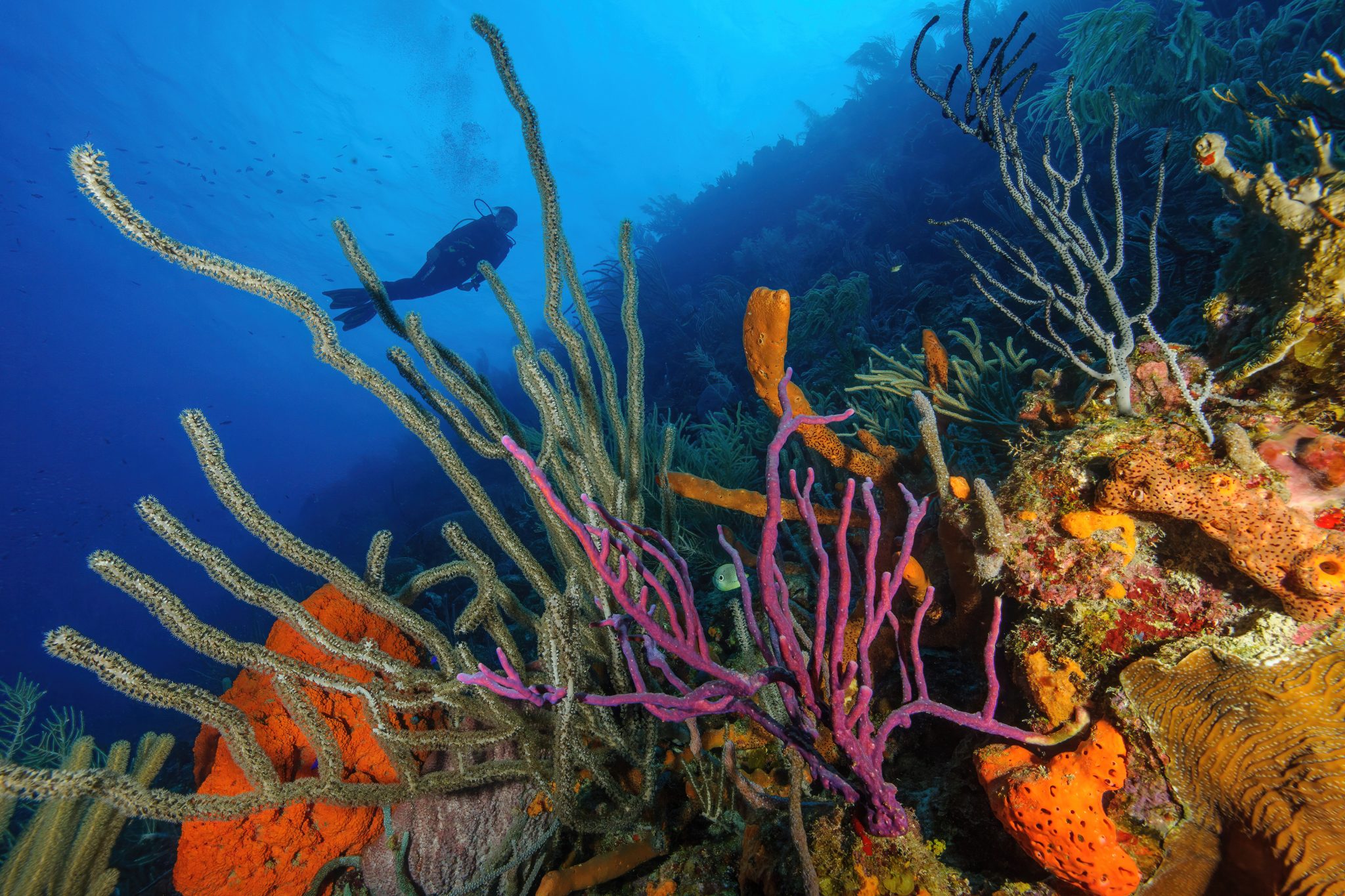
Protecting (Dutch) Caribbean Reefs from Unomia stolonifera
Recent reports highlight the concerning spread of the invasive soft coral, Unomia stolonifera, currently devastating Venezuela’s marine ecosystems and detected in Cuba. With the potential threat of its expansion to the (Dutch) Caribbean islands, urgent action and awareness are essential to safeguard marine biodiversity and local economies from possible catastrophic consequences.
Invasive species are animals or plants from another region of the world that don’t belong in their new environment. These species can have major ecological effects by decimating native flora or fauna. They can also cause large economic losses and impact human health. Invasive species also pose a significant threat to marine ecosystems worldwide, including the Dutch Caribbean. Among these invaders is the octocoral species Unomia stolonifera or “Pulsing Xenia”, originally from the Indo-Pacific. With its rapid growth and lack of natural predators, this species can outcompete native species and disrupt fragile marine habitats such as seagrass beds and coral reefs.
Background
The invasive soft coral U. stolonifera was first identified in 2014, off the coast of Venezuela. It is believed to have been introduced via the illegal aquarium trade. Since this species can reproduce sexually and asexually (or fragment), even small pieces can regenerate to spread. Once introduced it quickly took over shallow reefs and hard substrate at depths of 0-50 meters, outcompeting local corals and seagrass for space. Follow on surveys found that this coral species exhibited average percentage cover as high as 80%, vastly outcompeting native corals. In highly colonized areas, fish are disappearing due to loss of habitats.
In 2022, during a survey conducted in Cuba by the University of Havana, an unknown octocoral was discovered which was later identified as the invasive Unomia stolonifera. It is suspected that the coral larvae arrived in ballast water from fossil fuel ships originating from Venezuela, as nearby sites adjacent to Venezuelan ports have been heavily affected by the invasion.
How to help
Prevention through continuous monitoring, particularly in high-risk areas such as marine harbors and oil facilities, is paramount. Early detection plays a pivotal role in mitigating the threat posed by Unomia stolonifera.
The public’s involvement and awareness are also vital. Local communities, recreational divers, tourists, and all stakeholders are urged to participate in early detection efforts by reporting sightings (photo, location and date) of this invasive coral to their respective Protected Area Management Organization (PMO’s)- the Fundacion Parke Nacional Aruba (FPNA), STINAPA Bonaire, CARMABI Curaçao , Saba Conservation Foundation (SCF), Nature Foundation St. Maarten (NFSXM) and St. Eustatius National Parks (STENAPA). If an invaded area is confirmed, follow the recommendations by the local PMO’s.
Keys to Success
Despite the challenges, early detection is key to mitigating the threat posed by Unomia stolonifera. With continued vigilance, research, and community engagement, there is hope for containing this potential issue before it becomes a major threat.
About the DCNA
The Dutch Caribbean Nature Alliance (DCNA) supports (science) communication and outreach in the Dutch Caribbean region by making nature related (scientific) information more widely available through amongst others the Dutch Caribbean Biodiversity Database, DCNA’s news platform BioNews and through the press. This article contains the results from several scientific studies but the studies themselves are not DCNA studies. No rights can be derived from the content. DCNA is not liable for the content and the in(direct) impacts resulting from publishing this article.
-

 News3 months ago
News3 months agoHone your underwater photography skills with Alphamarine Photography at Red Sea Diving Safari in March
-

 News2 months ago
News2 months agoCapturing Critters in Lembeh Underwater Photography Workshop 2024: Event Roundup
-

 Marine Life & Conservation Blogs2 months ago
Marine Life & Conservation Blogs2 months agoCreature Feature: Swell Sharks
-

 Blogs1 month ago
Blogs1 month agoMurex Resorts: Passport to Paradise!
-

 Gear News3 months ago
Gear News3 months agoBare X-Mission Drysuit: Ideal for Both Technical and Recreational Divers
-

 Blogs2 months ago
Blogs2 months agoDiver Discovering Whale Skeletons Beneath Ice Judged World’s Best Underwater Photograph
-

 Gear Reviews2 months ago
Gear Reviews2 months agoGear Review: Oceanic+ Dive Housing for iPhone
-
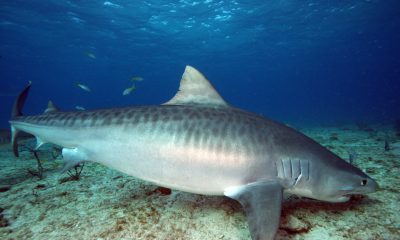
 Blogs3 months ago
Blogs3 months agoThe Thrilling Encounter with Tiger Sharks at Beqa Lagoon’s ‘The Colosseum’ with Coral Coast Divers


